On Tuesday, Apple detailed the results of its fiscal 2009 third quarter ended June 27, 2009, posting revenue of $8.34 billion and a net quarterly profit of $1.23 billion, or $1.35 per diluted share.Â
Apple's regional business segments
Apple Americas accounted for 1.147 million Mac sales and $3.827 billion in revenues. The amount of Mac sales is a major 42 percent surge in units sequentially and an uptick of 9 percent in revenue, but a more modest 1 percent gain in units and 11 percent in revenue compared to a year earlier.
Apple Europe represented 626,000 Mac sales and $2.006 billion in revenues. Sequentially, the numbers dropped 5 percent in units and 4 percent in revenue, but were increases of 9 percent in units and 22 percent in revenue versus spring 2008.
Apple Japan was responsible for 108,000 Mac sales and $416 million in revenues. Sequentially, these are down 1 percent in units and 17 percent in revenue, but increases of 6 percent in shipments and 14 percent in revenue year-over-year.
Apple's Asia Pacific (and FileMaker Inc) divisions represented 230,000 Mac sales and $592 million in revenues. The values represent a 14 percent sequential lift to units but only a 2 percent change in revenue. From year to year, units increased 11 percent and revenue increased 4 percent.
Apple's "Other Music Related Products and Services" segment was responsible for $958 million in revenue. It was a 9 percent sequential drop but a 17 percent increase versus a year ago.
Apple's "Peripherals and Other Hardware" added $341 million in revenue, a 5 percent drop in sequential revenue and a 22 percent drop annually.
Apple's "Software, Service and Other Sales" segment produced $528 million in revenue, a 16 percent plunge versus the March quarter but a 5 percent increase compared to the same quarter 12 months prior.
Apple's Mac business
Apple sold a total of 849,000 desktops during the quarter, generating $1.129 billion in revenue. The shipments and revenue are up 4 and 8 percent sequentially, but down 10 percent and 18 percent year-over-year.
In notebooks, Apple shipped 1.754 million of its portables during the quarter, creating exactly $2.2 billion in revenue. These statistics are healthy increases of 25 percent in units and 16 percent in revenue sequentially, but show an emphasis on lower-cost systems with a 13 percent increase in units year-over-year with a 2 percent drop in revenue.
There is between 3 and 4 weeks of channel inventory.
There were updates to the portable lineup that helped combined Mac units increase 13 percent year over year. The reaction was "very favorable" and has resulted in faster sales.
Half of Macs sold in stores were to customers who never owned a Mac before.
On shortages of the 13-inch MacBook Pro: Apple acknowledged a pair of models that are constrained in supply right now, but that this should improve within the "next few weeks."
The K-12 education market is weak and hit by budget cuts. Few of the federal stimulus funds went towards the state and district levels, where it helps Apple the most. There's about a 6 percent decline in institutional business, but higher education was flat.
Small businesses are also delaying their purchases.
Apple is 7 to 9 points ahead of the market in growth.
The company fully expected that some customers were going to buy a system because they could get a MacBook Pro for $1,199. At the same time, though, the price also upsold many who would have bought the cheaper $999 MacBook instead; the mix was more towards the cheaper system last quarter. K-12 goes towards the less expensive units.
Apple isn't "thinking fundamentally different" about its Mac business despite the price cuts. It wants to build the best computers possible, but it does so at lower prices when it thinks it can.
No updates on Snow Leopard other than that it will ship later this quarter (i.e. September).
Apple's iPhone and Apple TV businesses
Apple sold 5.2 million iPhones during the quarter, producing $1.689 billion in revenue. This is sequentially up 37 percent in units and 11 percent in revenue, but in year-over-year results was a staggering 626 percent jump in units and 303 percent surge in revenue.
iPhones are being sold in 81 countries and 50,000 storefronts.
iPhone inventory was flat sequentially.
>Response to the iPhone 3GS has been "tremendous" to the point where the company can't make enough of the phones to meet demand. "We're working to address this," the company said.
The company doesn't want to predict when supply and demand will balance, but it won't be in the short term. Rollouts to new countries may have to move by "a few weeks here or there."
There is "nothing to announce today" in terms of anything else Apple might do with carriers, such as notebooks. It's "very focused" on pairing with them on iPhones.
Apple saw "significant acceleration" in total unit sales this quarter, but sees the specific percentage breakdown of $99 iPhones versus the 3GS as a competitive secret.
Apple just took a "major change" with the introduction of the $99 iPhone 3G and says it added the model to exploit elasticity in that price area.
In large enterprise, the iPhone is producing "growing interest" thanks to 3.0 and the iPhone 3GS, which adds hardware encryption of data. Small and large businesses that allow individual purchases are doing well; more than one company bought over 25,000 iPhones each.
JD Power ranked the iPhone the highest in satisfaction with business users. "We're at the tip of the iceberg," Apple said.
The company is focused on total iPhone use, not just which specific models are being used. Only 18 countries currently sell the iPhone 3GS so far and it's still constrained. Also, many of the early buyers are upgrading rather than buying as first-time customers. It's too soon to tell how results will fare as there's only been a few weeks with the new product mix.
The App Store is available in 77 countries and reaches 45 million people. By comparison, Android Market has less than 5,000 apps, and both BlackBerry App World and Nokia's Ovi Store have between 1,000 and 2,000 apps.
Apple "does have some ideas" on how to avoid the race to the bottom in terms of iPhone app prices, and may categorize them differently in the future. However, as the install base grows, it makes more sense for developers to sell at lower prices. It's up to them to set the price.
Apple won't release the percentage of iPhone sales by geography; unofficial estimates have it at 40 percent for the US.
The company continues to sell the iPhone prepaid in those markets where it's dominant. The greatest success is in areas where postpaid (subscription) leads the way.
Nothing new on the iPhone in China, other than that it's a "priority project" and should happen within a year.
Apple continues to see its partnering with AT&T as an "excellent relationship."
Apple's iPod business
About 10.215 million iPods were sold this quarter, resulting in $1.492 billion in revenue. The sequential decrease marks 7 percent and 10 percent drops in units and revenue, and a near identical yearly 7 percent drop in units and an 11 percent drop in revenue over the same period.
Apple has between 4 and 6 weeks of iPod channel inventory; the reduced sales were partly attributed to dropping channel inventory by about 400,000 iPods. The new iPod shuffle and the Easter holiday created a slight overstock at the end of March that necessitated culling inventory.
Traditional MP3 players (shuffle, nano and classic), had a decline year over year that Apple forecasted would occur. "This was one of the original reasons we developed the iPhone and the iPod touch," the company said.
Apple expects conventional iPods to continue to decline as the iPhone and iPod touch cannibalize the lines. However, about 50 percent of those buying non-touch iPods were buying an iPod for the first time.
The iPod continues to have over 70 percent of the US market, according to NPD data; this is actually a gain in share despite a shrinking market.
The iPod touch specifically grew about 130 percent year over year, though numbers weren't given. Shipments of the iPod touch should "grow significantly" in the next quarter.
A "good number" of iPod touch users have upgraded to 3.0, but Apple won't go into specifics.
Apple's retail business
Retail stores accounted for 492,000 Macs shipped in the quarter, or about $1.496 billion in revenue. This is a 12 percent sequential step up in units and a 2 percent increase in revenue, but in year-to-year terms just a 3 percent increase in units and a 4 percent climb in revenue.
There were an average of 254 stores open in the quarter, and the average revenue per store was $5.9 million.
38.6 million people visited stores in the quarter, an increase of 22 percent.
The new One to One program launched in the quarter and hosted 667,000 personal training sessions.
Apple is still on track to open 24 new stores in 2009 and remodel about 27 more.
The company's first store in France should open for the holidays.
Apple's next (Q409) fiscal quarter
The company expects its fourth quarter revenue to float between $8.7 billion and $8.9 billion, and its diluted earnings per share to range between $1.18 and $1.23.
Costs are rising for components, and you're seeing that in the market. Apple still wants to provide state-of-the-art products, however and wants to provide "ever increasing value."
DRAM (memory) and LCD display market have become restrained, but flash memory prices are stabilizing. Hard drive and optical drive prices are recovering.
Apple paid Toshiba $500 million earlier this quarter for a long-term flash memory supply deal. NAND flash is a "very key component" for Apple as it's used in so many of its products.
The company says it "may do others" of this type and won't "close that door," but it depends on circumstances.
Tim Cook on the question of netbooks: "whatever price point that we can build the best at, we will play there. At this point we don't see a way to build a great product for this $399, $499... this kind of price point unit," he says. "As I've said before, I think this is playing out in several areas, I think some customers, maybe many customers buying these [netbooks], become disappointed and disenchanted after they buy one of these."
When questioned on a possible smaller device: Cook would "never want to discount anything" but won't talk about any plans for a particular product. Most people buying portables "want a full-featured notebook."
"I think some of the netbooks that are being delivered... are very slow," Cook said. "They have software technology that is old. They don't have a robust computing experience. They lack horsepower. They have small displays and cramped keyboards. I could go on and on, but I won't."
 Katie Marsal
Katie Marsal






-m.jpg)






 Wesley Hilliard
Wesley Hilliard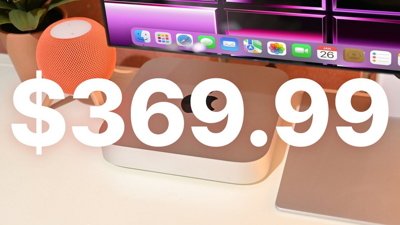
 Christine McKee
Christine McKee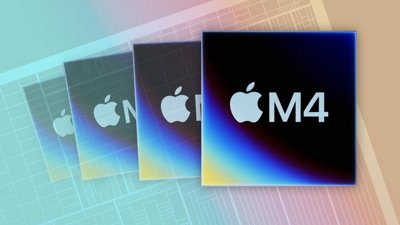
 Malcolm Owen
Malcolm Owen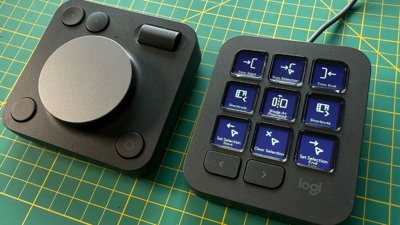
 William Gallagher
William Gallagher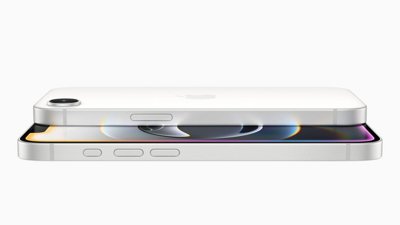
 Andrew Orr
Andrew Orr

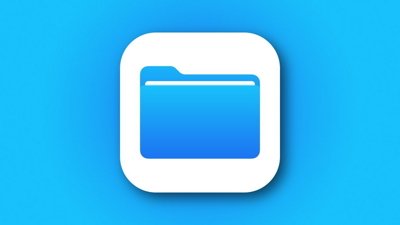



-m.jpg)




98 Comments
Not sure how 849,000 desktops and 1.398 notebooks adds up to 2.6 million mac sold from the previous article. What am I missing?
Not sure how 849,000 desktops and 1.398 notebooks adds up to 2.6 million mac sold from the previous article. What am I missing?
1.754M portables -- making the correction.
Apparently Apple didn't get the memo about the world being in a recession.
Billion Billion Dollars Sheesh!
Maybe we should get together and revive the Amiga.
By my calculations, Apple now has about 12.5% of the smartphone market.